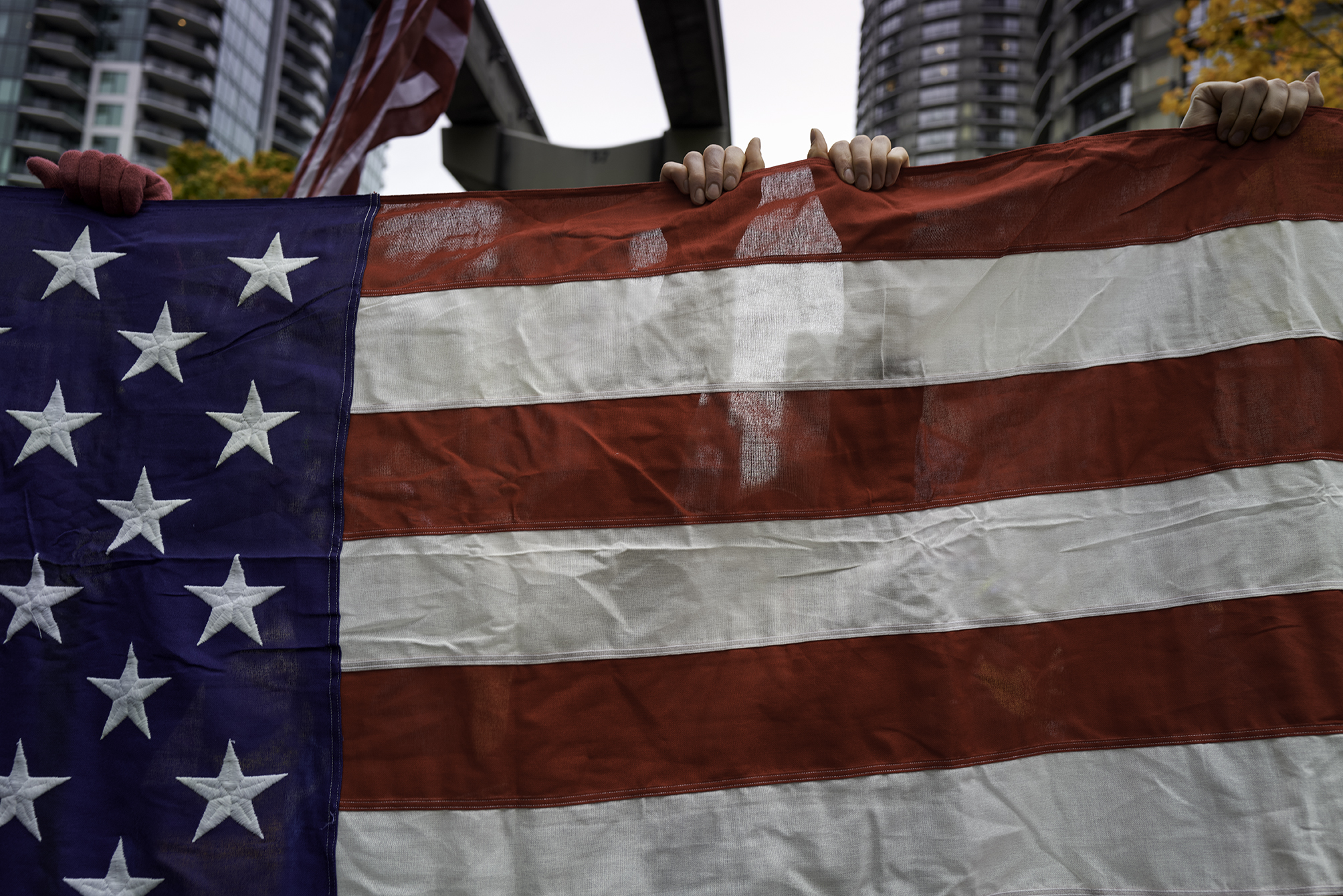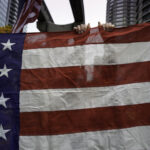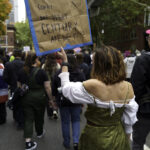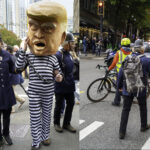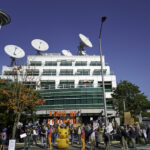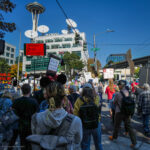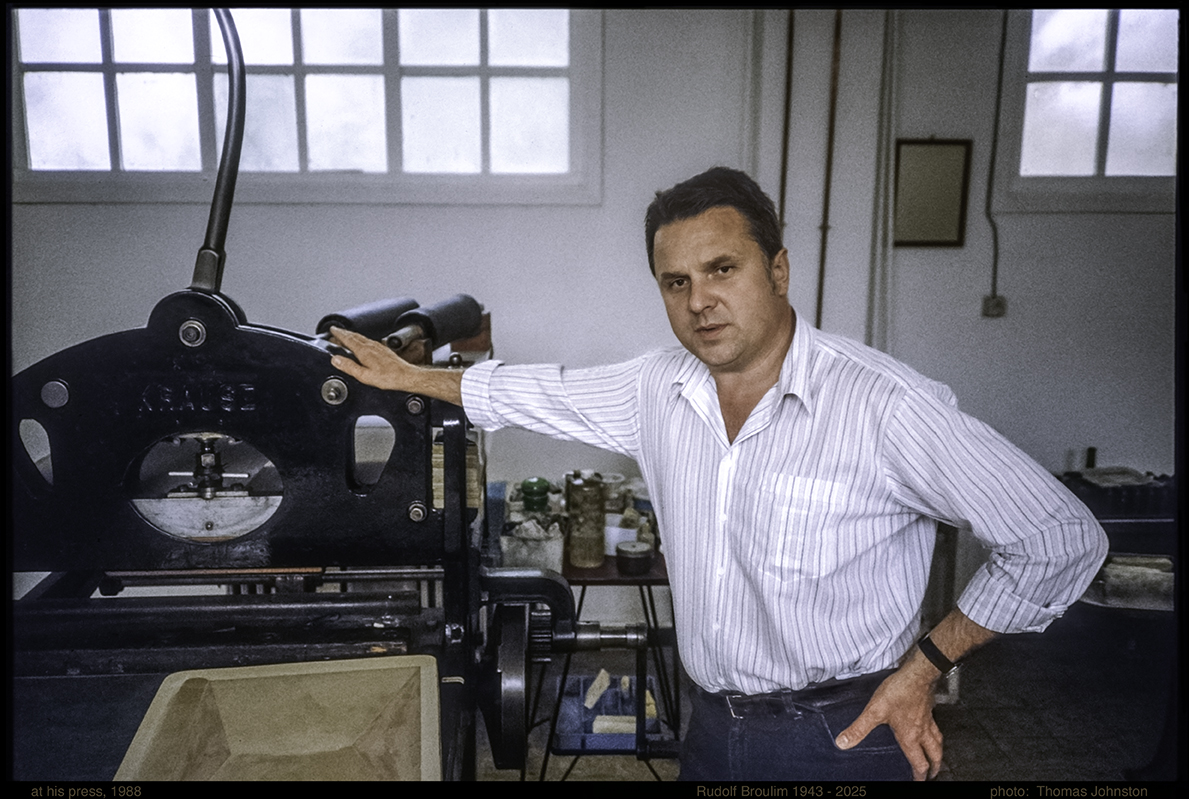We’ve seen the many excellent photographs and video documenting this important day from citizens of all ages, who came together to express their love of country and compassion for the Constitution of The United States. This No Kings march is one of many in the United States and in other countries around the world.
We joined the Seattle march, from the Seattle Center, along 5th Avenue under the Monorail, to the Pike Place Market, well over a mile of people, estimated to be 90,000, many on foot, some with assistance, multi-generational families, infants, parents, grandparents, teenagers to octo/nonageneraions. Individual home-made signs with unique messages all declared a love of country with the over riding message: No Kings!
My usual approach is to document the action as a participant, marching in and with others. It was an honor to participate in this record breaking peaceful demonstration, celebrating our love of country. Toward the end of the afternoon I saw three individuals coming up First Avenue, going toward the Seattle Police Department car in the intersection.
- It Takes A Village
- What Century Are We In?!
- No Kings Seattle 2025
- We Are On Native Land
- Coming and Going

